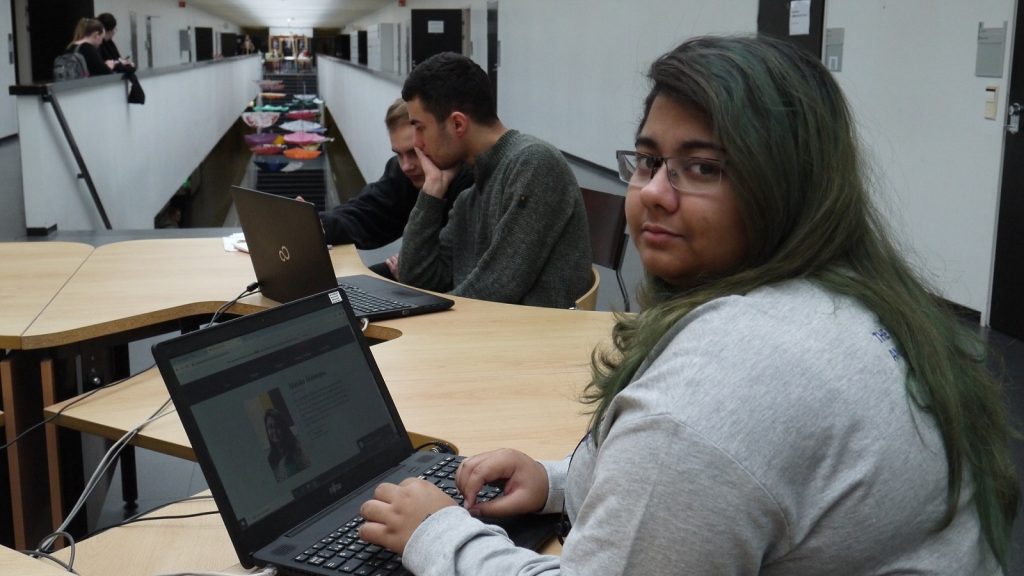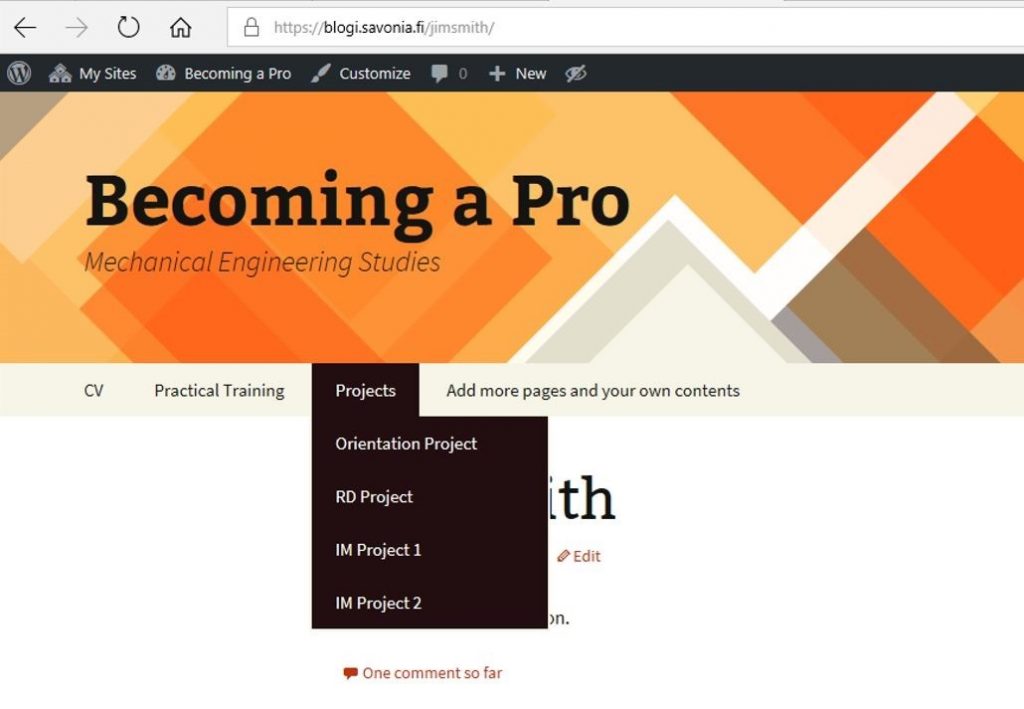Electronic portfolios (ePortfolio) have successfully been used for years in career guidance in Savonia Business. The project URAOHJAUS 2020 encouraged us to experiment the use of ePortfolios also in Savonia Engineering. The 1st year students of Mechanical Engineering (a degree programme conducted in English) was selected as a pilot group in Autumn 2019.

Fig.1. Maisha, a Mechanical Engineering student from Bangladesh, was one of the first students to create her ePortfolio.
The goal is that each student in the group documents the development of his/her professional skills during the degree studies in one particular social media environment. In this way, the student will automatically create a personal information package of his/her own professional competence, which can be shared easily, just by sending a link, when applying for work during the studies and after graduation. At the same time, a handy tool for monitoring professional development is created. It easily allows all the career counselling staff involved to see the student’s development during the studies.
The experimenting phase will also give ideas how to include the use of ePortfolios into the curriculum and its courses in a realistic and motivating way, supporting or even replacing the traditional reporting methods.
During autumn 2019, the Mechanical Engineering students chose the social media platform they wanted to use for their own ePortfolio. Most of the students ended up making their ePortfolio on the Savonia WordPress blog platform. The structure of the ePortfolio was built together, during the lessons, to make it as easy as possible. Creating one’s own ePortfolio platform and adding the first draft of a CV there were the compulsory learning tasks included in the course called Engineering English.

Fig.2. The ePortfolio structure was made to reflect the curriculum structure.
Currently, during Spring 2020, CVs are being drafted further in the optional course called Industry and Networking. In addition, when the students will finish their orientation project course in May, they will add a description of its final results as well as the professional skills they have gained during the project on their ePortfolios.
During the 2nd-4th study year, the professional development gained during internship periods (Practical Training 1-3) will be reported on the ePortfolios. Also, the learning during all the project courses included in the curriculum will be documented there. These projects include RD Project, Industrial Management Project 1, and Industrial Management Project 2.
It is up to the student’s own interest to develop the contents and visuality of his/her ePortfolio further, to make it even more personal. Built-in platform themes, for example, are an easy and fast way to create the visuality of an ePortfolio.
After the first months of experimenting, it seems that the ePortfolio is an easy and effective tool to make students’ skills and learning visible. It especially helps the students themselves to see and understand the steps of their own professional development, because all the documentation can be viewed in one place. The documentation is easily accessible and presentable, and so it can be used as an visualisation of one’s skills and competences e.g. during a job interview.
Text and photos: Irene Hyrkstedt